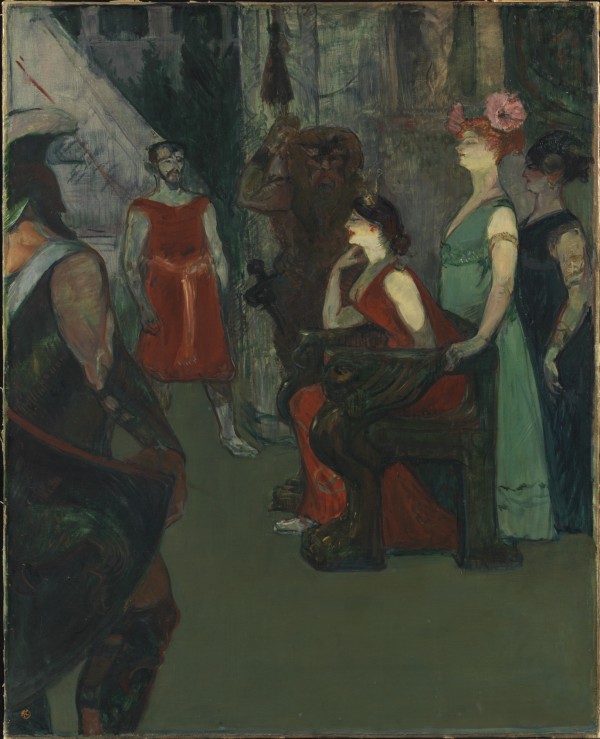Messalina
Provenance
Manzi, Paris. Barbazanges, Paris. Georges Bernheim, Paris. Mr. & Mrs. Charles H. and Mary F. S. Worcester, Chicago, 1928; by bequest to The Art Institute of Chicago, 12 Dec. 1929; acquired (as exchange for Henri Matisse’s painting Bathers by the River) by Henry Pearlman, by 28 Feb.1953; Henry and Rose Pearlman Foundation, by 1971.
Critical Perspective
While spending the winter in 1900 in Bordeaux, Toulouse-Lautrec was so taken by a production of Messaline, Isidore de Lara’s 1899 opera about sexual obsession in ancient Rome, that he created six paintings and numerous drawings inspired by it. The series reflects the artist’s career-long fascination with performers on stage, though he is best known for images of entertainers in the dance halls, cabarets, and cafés of Paris’s demimonde. As is typical of his approach to such subjects, he chose an unusual vantage point that possibly resulted from his deep interest in Japanese woodblock prints: the viewer glimpses the scene from stage left, looking slightly up toward the lascivious Empress Messalina. The garish green and red tones create a compelling accompaniment to the torrid plot of the opera, which ends with the violent deaths of Messalina’s lovers, the brothers Harès and Hellion. The artist also captured the effect that the gaslights used in theaters of the time created: a greenish cast on performers’ skins.
Henry Pearlman, concerned about a commentary to be published about this painting, writes to Milton Fox at Harry Abrams, Inc., and threatens a lawsuit if it affects the work's value.

